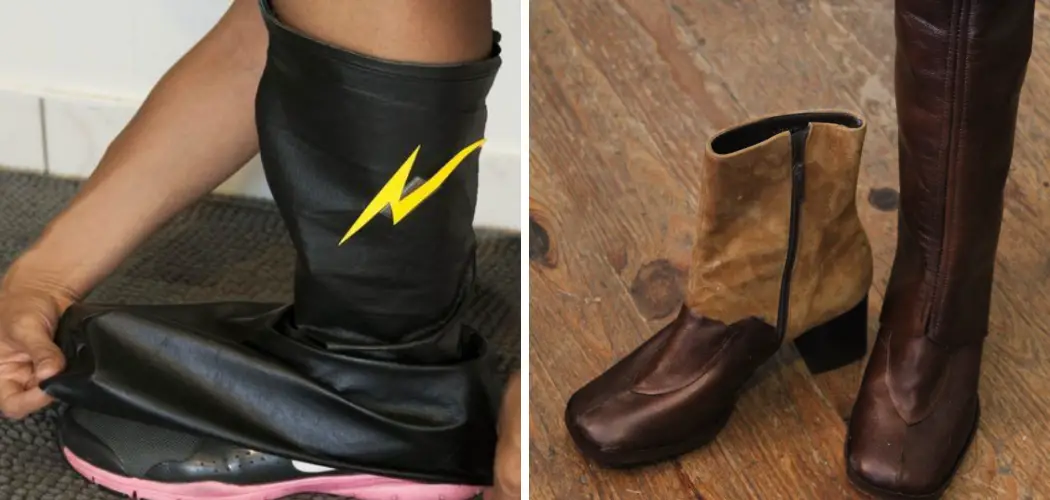Creating boot covers for costumes adds a professional touch and allows for customization to perfectly complement your character’s attire. Whether you’re cosplaying as a superhero, a historical figure, or a fantasy character, boot covers can elevate your costume’s authenticity and overall appearance. Making boot covers at home offers flexibility in design, material choice, and sizing, ensuring a comfortable and tailored fit.
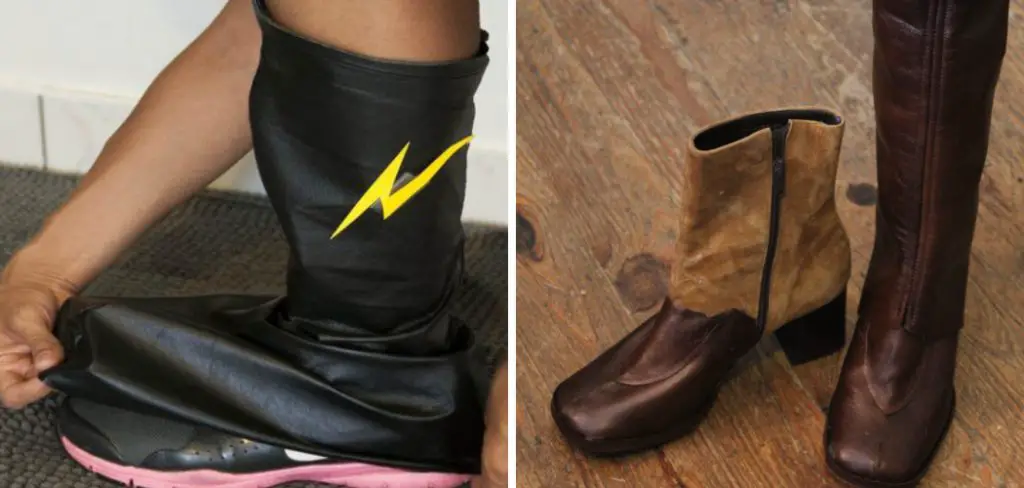
In this article, we’ll explore various methods and techniques for how to make boot covers for costume, from sewing fabric covers to crafting foam or leather alternatives. With a few simple materials and basic sewing skills, you can create boot covers that enhance the visual impact of your costume and bring your character to life with style and flair.
The Importance of Boot Covers
Boot covers play a critical role in costume design, serving not just as a finishing touch but as an element that can define the authenticity and cohesiveness of a character’s ensemble. In the realm of cosplay and costuming, the devil is indeed in the details.
Boot covers allow enthusiasts and professionals alike to replicate intricate footwear designs without the expense of purchasing specialized boots for every costume. This practicality extends further; boot covers can seamlessly integrate with a variety of shoe sizes and styles, ensuring that the wearer not only looks the part but also walks comfortably.
Additionally, the use of boot covers promotes sustainability in costuming, encouraging the reuse of materials and footwear across multiple looks. In essence, boot covers are a testament to the resourcefulness and creativity of costume creation, making them indispensable in achieving both visual fidelity and wearability.
The Role of Boot Covers in Costume Design
Boot covers are not merely accessories in the world of costume design; they are pivotal in transforming an everyday attire into an authentic representation of a character. They bridge the gap between the character’s universe and our reality, making the fantastically impossible seem tangible and within reach.
In professional stage performances and film, the precision in costume details, including footwear, can significantly affect the audience’s immersion and belief in the character’s world. Boot covers enable designers to achieve historical accuracy or to adhere closely to a source material’s design without the logistical challenges and high costs associated with custom shoe production.
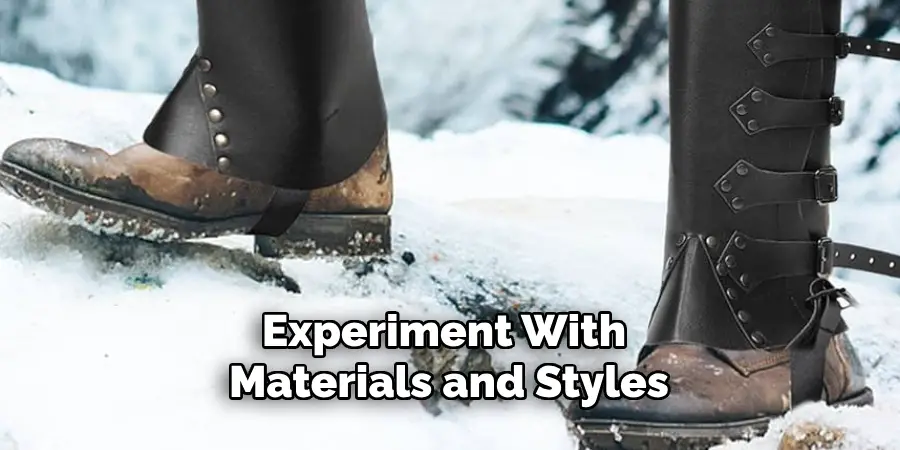
For amateur costume designers and cosplay enthusiasts, boot covers represent a feasible way to experiment with materials and styles. This versatility allows for a broad exploration of creativity, from minimalist designs that require basic materials to complex constructions that involve intricate sewing or crafting techniques. Essentially, boot covers embody the spirit of ingenuity in costume design, permitting creators to push boundaries and explore limitless possibilities.
Providing Functionality and Versatility
Boot covers are more than just a tool for aesthetic enhancement; they offer essential functionality and versatility that can adapt to various costuming needs. One of the main advantages of using boot covers in costume design is their ability to transform any basic footwear into a piece that matches the specific requirements of a character.
This means that performers or cosplayers can wear their most comfortable shoes while still maintaining the integrity of their character’s look. This practical aspect is particularly important for events or performances that require long hours of wear, where comfort becomes as crucial as appearance.
Additionally, the versatility of boot covers lies in their customizability. Depending on the character being portrayed, materials can range from simple fabrics to leather and even metal accents for a more futuristic appeal. This flexibility allows costume designers to experiment with textures, colors, and patterns to create an accurate representation of the footwear depicted in comic books, movies, or historical texts.
With the right sewing pattern and materials, boot covers can mimic the appearance of straps, buckles, and laces, or incorporate LEDs and other electronic components for dynamic effects.
Ultimately, the use of boot covers in costumes provides a practical and creative solution to the challenge of finding or creating footwear that complements the intricate details of character outfits. Their adaptability not only preserves comfort and mobility but also encourages a sustainable approach to costuming by allowing for multiple uses and transformations of a single pair of shoes across various costumes.
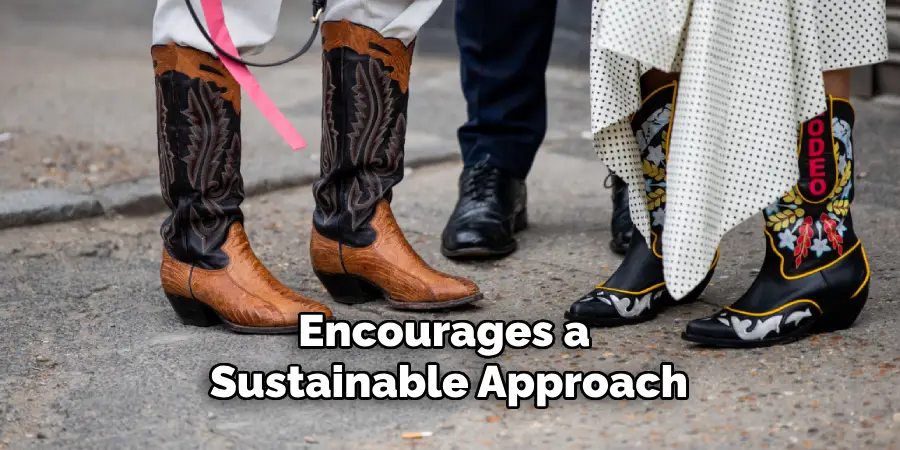
Exploring Different Costume Styles
The realm of costume design is vast and varied, encompassing a wide array of styles that cater to different genres, historical periods, and fantastical concepts. Each costume style presents its unique challenges and creative opportunities, especially when it comes to crafting boot covers that complement and enhance the overall look.
Historical Costumes often require a keen eye for detail and a commitment to authenticity. Boot covers for these costumes may utilize materials like brocade, velvet, or leather, adorned with period-appropriate trims and closures. Techniques such as embroidery can add an extra layer of historical accuracy and visual appeal.
Fantasy and Science Fiction Costumes allow designers to unleash their creativity without the constraints of historical accuracy. Materials can range from metallic fabrics and iridescent leathers to unconventional items like plastic, rubber, and advanced textiles with LEDs. The goal here is to capture the essence of a character or species from a world unbound by our reality, making boot covers an essential tool for achieving out-of-this-world looks.
Superhero Costumes demand a blend of sleekness and functionality, often mirroring the aesthetic seen in comic books and films. Materials like spandex, latex, and faux leather are commonly used to craft boot covers that offer both flexibility and a striking visual impact. The use of vibrant colors and bold patterns is crucial in bringing these larger-than-life characters to the ground.
Steampunk Costumes intertwine Victorian elegance with industrial innovation, requiring a mix of materials such as leather, brass, and lace. Boot covers in this category often feature gears, buckles, and rivets, emphasizing the inventive spirit of the steampunk genre.
Each costume style presents distinct opportunities for innovation in boot cover design, challenging creators to think beyond conventional materials and techniques. The decision to craft boot covers that accurately reflect a character’s universe significantly contributes to the believability and magic of the costume, making it a crucial step in the design process.
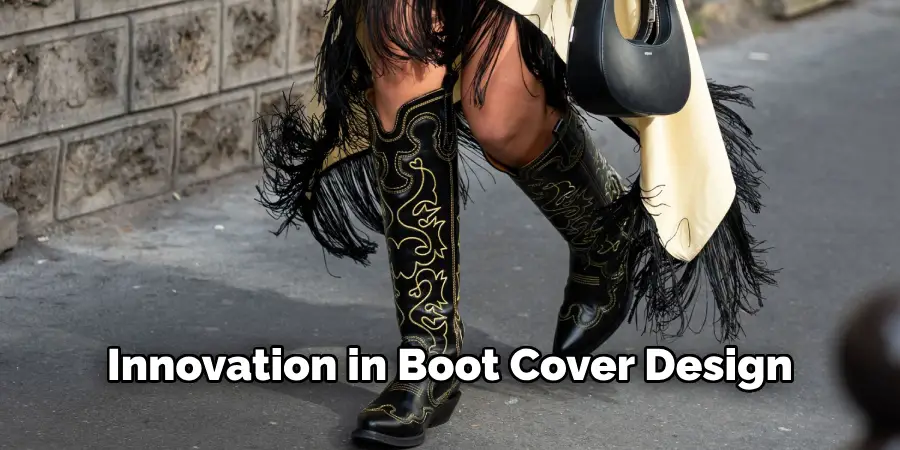
Materials and Tools Needed for Making Boot Covers
When setting out to create custom boot covers, having the right materials and tools at your disposal is essential. The requirements can vary greatly depending on the complexity of the design and the desired outcome. Here’s a basic list of materials and tools that are commonly used in the creation of boot covers across various costume styles:
Materials:
- Fabric: The choice of fabric will depend on the costume’s era, character, or genre. Common fabrics include stretch materials like spandex for superhero costumes, leather or faux leather for historical and steampunk pieces, and metallic or iridescent fabrics for fantasy or sci-fi costumes.
- Trim and Decorations: Depending on the design, you might need lace, embroidery, buckles, straps, gears, or LEDs to add detail and authenticity to your boot covers.
- Closure Systems: Velcro, zippers, or laces can be used, depending on the look you’re aiming for and how securely you need the covers to fit over your shoes.
- Reinforcement Materials: For boot covers that require a stiffer form or additional support, interfacing or foam can be useful.
Tools:
- Sewing Machine: While some boot covers can be hand-stitched, a sewing machine can save time and provide a cleaner finish.
- Needles and Thread: Ensure you have the right type of needle for your fabric. For example, leather and heavy fabrics require stronger needles than lighter materials.
- Scissors and Cutting Tools: Sharp fabric scissors are a must, and a rotary cutter can also be helpful for precise cuts.
- Measuring Tape and Ruler: Accurate measurements are key in creating boot covers that fit well.
- Pins or Fabric Clips: These are useful for holding your material in place while you sew or cut.
- Pattern or Blueprint: Whether self-drafted or purchased, a pattern helps in achieving the correct size and shape for your boot covers.
Equipped with these materials and tools, costume designers and cosplayers can begin the creative process of crafting boot covers that bring their characters to life. While the list above covers the basics, individuals may find that certain projects require additional, more specific tools or materials, especially when working with unconventional designs or aiming for high levels of detail and authenticity.
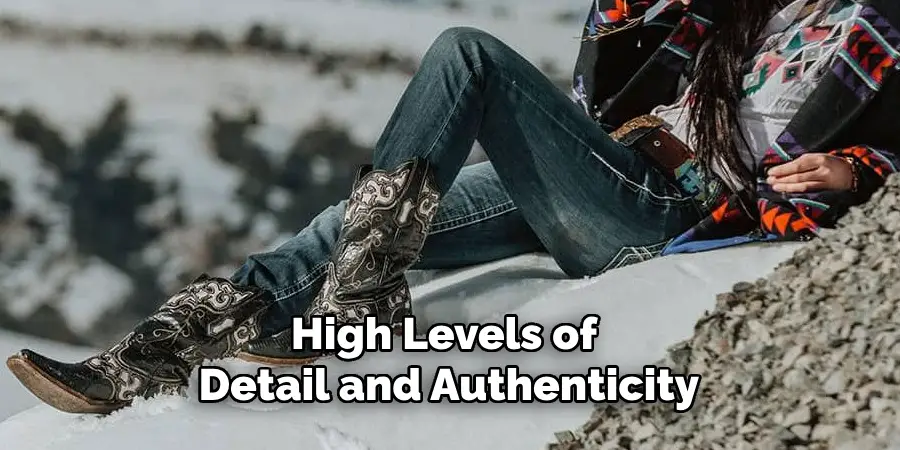
10 Methods How to Make Boot Covers for Costume
1.Sew Fabric Boot Covers:
Use fabric such as faux leather, spandex, or vinyl to sew boot covers that match your costume. Measure your leg and foot to create a pattern, then cut out the fabric and sew it together following the pattern. Add closures such as zippers or Velcro for easy wearing and removal. Embellish with extra details like studs, buttons, or embroidery for a personalized touch.
One of the advantages of creating your own boot covers is being able to customize them to your liking. You can choose the perfect fabric to match your costume and add any embellishments or designs that you desire. This will give your costume a unique and professional look.
2.Craft Foam Boot Covers:
Create boot covers using craft foam sheets for a lightweight and customizable option. Trace your leg and foot onto the foam, cut out the shapes, and glue them together to form the cover. Add details like seams or embellishments with paint or markers to enhance the appearance. This is a great option for cosplay, theater productions, or even just as a fun and unique fashion accessory. Though they may not be as durable as traditional boot covers, they are easy to make and can be personalized to your liking.
3.Modify Existing Boots:
Alter existing boots by adding fabric or foam to create boot covers that match your costume. Attach fabric or foam pieces to the top of the boot shaft using glue or stitching, ensuring a secure fit. Trim any excess material and customize the covers with decorations or paint. If needed, you can also add straps or elastic to keep the covers in place.
To create a more dramatic effect, consider adding foam pieces to the sole of the boot. This will give the appearance of a thicker or higher heel. You can also use fabric or paint to cover any visible seams between the original boot and the added material.
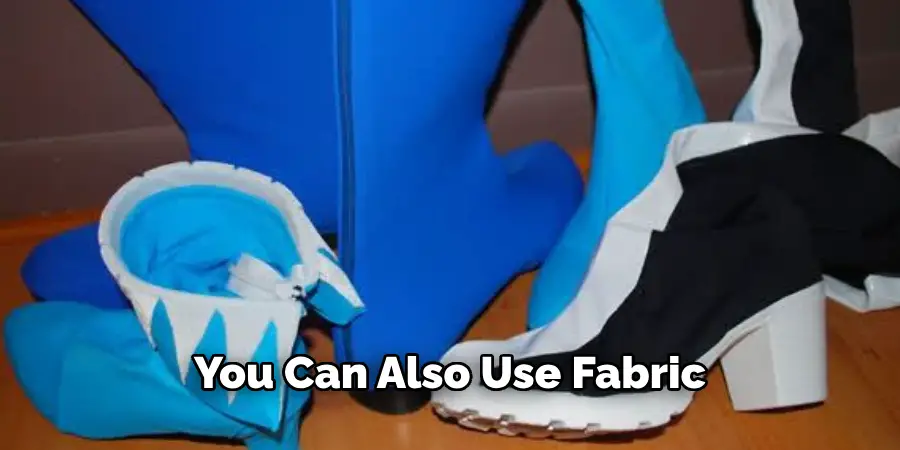
4.Use Leg Warmers as Boot Covers:
Repurpose leg warmers as boot covers by layering them over your shoes and leggings. Choose leg warmers in colors and patterns that complement your costume and adjust the length as needed. Secure the leg warmers in place with elastic bands or clips for a snug fit. This simple DIY solution can add an extra element to your costume and keep your feet warm on chilly Halloween nights. Make sure Leg warmers are a popular accessory that can be used for various purposes, including as boot covers. They are typically worn around the lower legs and ankles to provide warmth and protection from cold weather. However, they can also serve as stylish and functional boot covers.
5.Knit or Crochet Boot Covers:
Knit or crochet boot covers using yarn in colors that match your costume. Follow a pattern for leg warmers or boot cuffs, adjusting the size to fit your legs and shoes. Add ribbing, cables, or other stitch patterns for texture and visual interest. Attach buttons, faux fur, pom-poms, or other embellishments to the top edge for a fun and unique touch.
Boot covers are accessories that can add an extra special touch to your costume. They can be worn over boots or shoes to give the appearance of a different style or era. Knitting or crocheting boot covers allows you to customize them to your specific costume and add your own personal flair. Plus, they are a great way to keep your legs warm while still looking stylish.
6.Create Leather Boot Covers:
Make boot covers from genuine or faux leather for a durable and realistic option. Cut out leather pieces based on your leg and foot measurements, then sew or glue them together to form the cover. Add buckles, straps, or studs for embellishment and authenticity. While there are many different styles and methods for creating leather boot covers, this guide will provide a basic step-by-step process to get you started. If you have basic sewing or crafting skills, you should be able to create a pair of leather boot covers in just a few hours.
7.Repurpose Old Boots or Shoes:
Repurpose old boots or shoes by transforming them into boot covers for your costume. Cut off the toe and heel sections, leaving only the shaft intact, and adjust the size as needed. Add closures or decorative elements to customize the covers to your costume. You can also use old boots or shoes as planters, creating a unique and decorative addition to your garden. While some may choose to paint or decorate the boots, leaving them in their original state can also lend a rustic and natural charm to your outdoor space.
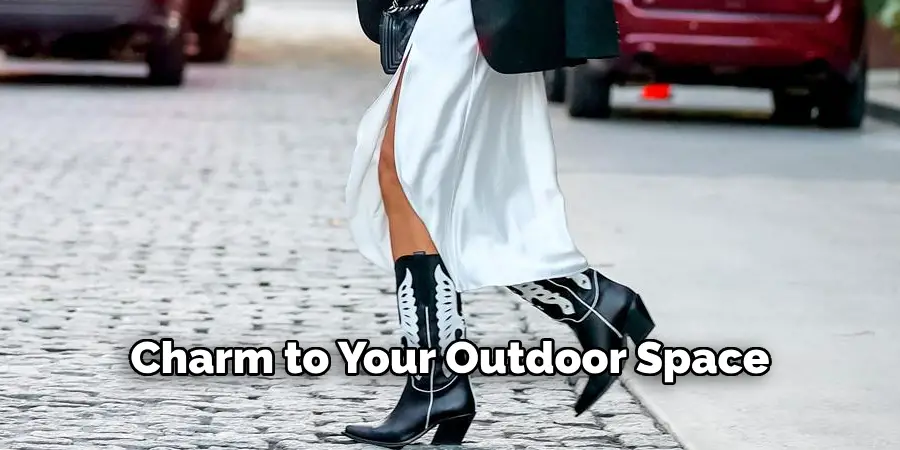
8.Use Socks as Boot Covers:
Transform socks into boot covers by cutting off the toe and heel sections and sliding them over your shoes and leggings. Choose socks in solid colors or patterns that complement your costume and adjust the length as needed. Secure the socks in place with elastic bands or clips. You can also add embellishments such as bows or buttons for a more unique look. This quick and easy trick is perfect for last-minute costume changes or for adding an extra layer of warmth to your outfit.
9.Sculpt Boot Covers from Worbla or Thermoplastics:
Sculpt boot covers from Worbla or thermoplastics for a durable and moldable option. Heat the material until it becomes pliable, then mold it around your leg and foot to create the desired shape. Add texture, seams, or other details with sculpting tools, then paint the covers to match your costume. This technique is great for creating custom boot covers that can withstand wear and tear, and can be easily repaired or re-shaped as needed.
10.Customize with Fabric Paint or Markers:
Customize fabric or foam boot covers with fabric paint or markers to add details and enhance the appearance. Use stencils or freehand techniques to create designs such as stripes, patterns, or logos that match your costume. Allow the paint to dry completely before wearing the boot covers. While fabric paint is permanent and will not come off in the wash, be sure to follow manufacturer’s instructions for care.
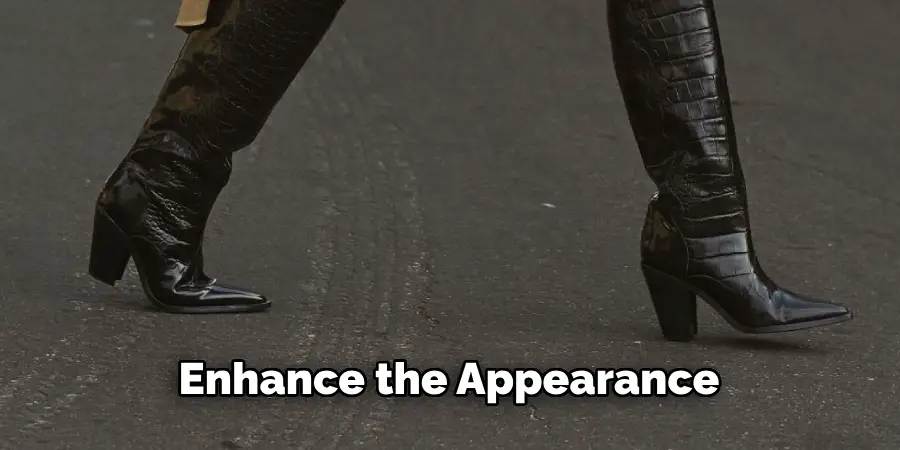
Conclusion
In conclusion, mastering the art of making boot covers for costumes opens up a world of creative possibilities in costume design. By following the comprehensive guide provided, costume enthusiasts can elevate their costumes to new heights of authenticity and flair. Boot covers not only enhance the overall look of a costume but also provide functionality and versatility, allowing for comfortable movement and flexibility during performances or events.
Whether sewing from scratch or exploring alternative no-sew methods, attention to detail and creativity are key to crafting boot covers that perfectly complement any costume. Thanks for reading our blog post on how to make boot covers for costume! We hope you found it helpful and informative.

